Helen Keller is quoted as saying that life is either a grand adventure or nothing. I don’t know exactly how I feel about that sentiment, but I do know that I’ve certainly had my share of adventures in the last decade, especially in the last few years.
My latest adventure is placing some of my weaving in high-end retail locations. I’m starting with the one that makes the most sense given my status as a Roycroft Renaissance Artisan – the Copper Shop Gallery on the Roycroft Campus.
It’s taken time for me to wrap my thinking around retail outlets. They need to cover all their costs for a brick and mortar store, and still I need to get paid reasonably for my time designing and weaving. I had an “ah ha” moment sometime this fall, when I realized that if I applied a percentage the cost of jury fees, booth fees, van rental, meals, etc. to the items I sold at shows, to say nothing of my time in setting up, tearing down, and staffing the booth, that the commission that retail outlets take made sense. Then I felt like I had to make it through the remaining shows I had.
I have an appointment Friday morning with the manager of the Copper Shop. That caused me to once again look at my tags. I’ve hated them for a long time and am in the process of working with a printer to devise an alternative. But in the meantime, my tags for a retail outlet needed to do double duty. They had to both give the important information about the fabric and identify my business so customers could find me for future purchases.
I’d spent some time looking at the tags of other weavers at both the Weaver’s Guild’s Holiday Sale and the Roycroft Winter Show, and decided that for now I’d adopt a common strategy; I’d hand write the information on the back of a business card and hang it from the piece. Hanging doesn’t work if the fabric will be folded or rolled and placed in a storage bin for moving, but it does if there are a limited number of items that will be transported on hangers and then displayed.
I spent hours choosing what pieces I would bring, pressing each piece to remove wrinkles, re-tagging them, and creating an Excel spreadsheet so I’d know what I was bringing and what I anticipated for sale price of each item. I’m bringing 8 shawls in various fibers, 8 silk scarves, and 12 scarves in assorted fibers. I’ve probably overdone it, but that’s how I am. That’s how well most of a day gets eaten up.
Amidst continuing to make Christmas presents that I can’t yet show you, I’ve also done some weaving, mostly of those towels from the last post. I got 7 towels out of the warp, although the last one, with a test fiber, is short.
After this shot I machine and hand hemmed, inspected and fixed some weaving errors, washed and dried, and hard pressed. Here they all are in their finished state.
The top three are for my daughter to give as gifts. Burgundy, celery, purple, and red (for my inventory) all have the same treadling pattern. I hadn’t intended to do this, but liked how it worked so went for it.
After weaving those four, in an effort to continue to use up the stash, I decided to use a cool variegation of earth tones in a cotton and linen blend. Even though it was much fatter than my 8/2 warp, I figured it would both look good and be thirsty.
It wove up so quickly that I used a variegation of green, blue & yellow of the same fiber.
Because of the thickness of the yarn I had to modify the treadling pattern for these two towels slightly.
For the last towel I wanted to try out another fiber in my stash. I’m not sharing what it is here, because if I have time (what?!?!) I want to put on a short warp and weave a few of these as gifts so my family can give me some honest feedback about how they work and feel. I modified the treadling pattern for this towel.
When I got all the towels off the loom I was surprised by how much the cotton-linen warp pulled in. When I took them out of the dryer – wow! They were small and lumpy! Here’s what the earthy towel looked like on my ironing board before the hard press.
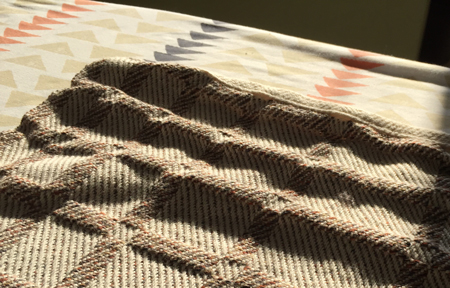
A very clear example of why that hard press is an essential part of finishing every piece of weaving.
Now I’m going to take Jack for his afternoon walk and then get back to my gift making. Maybe one of these days I can get to writing my Christmas cards. 🙂

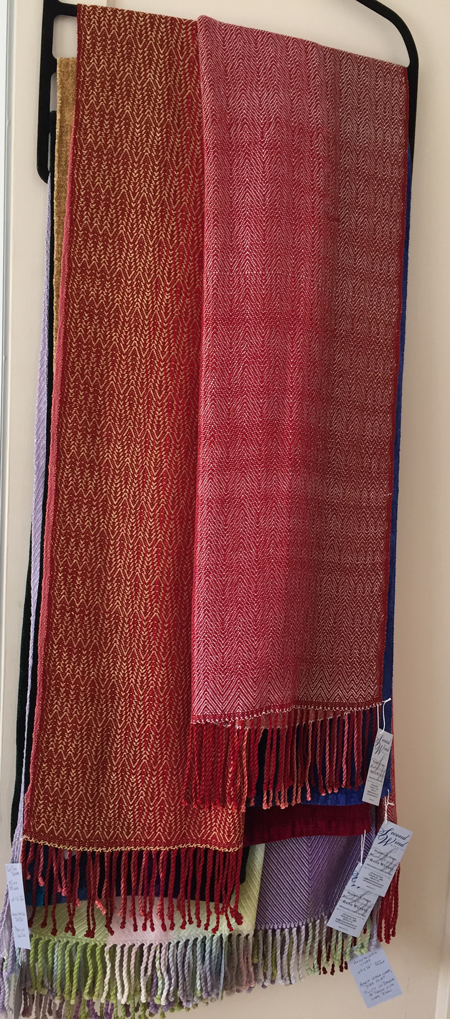
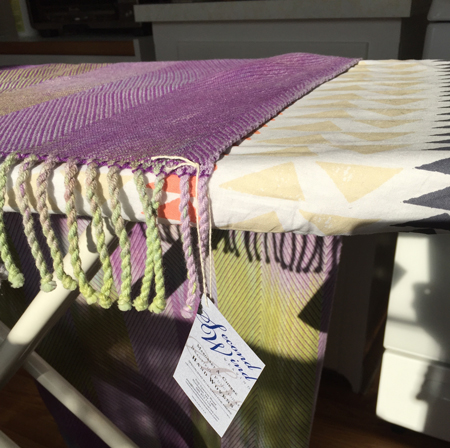
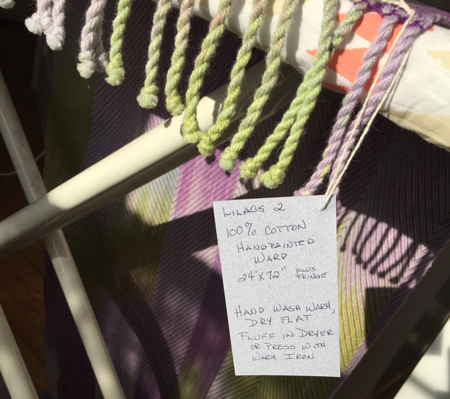
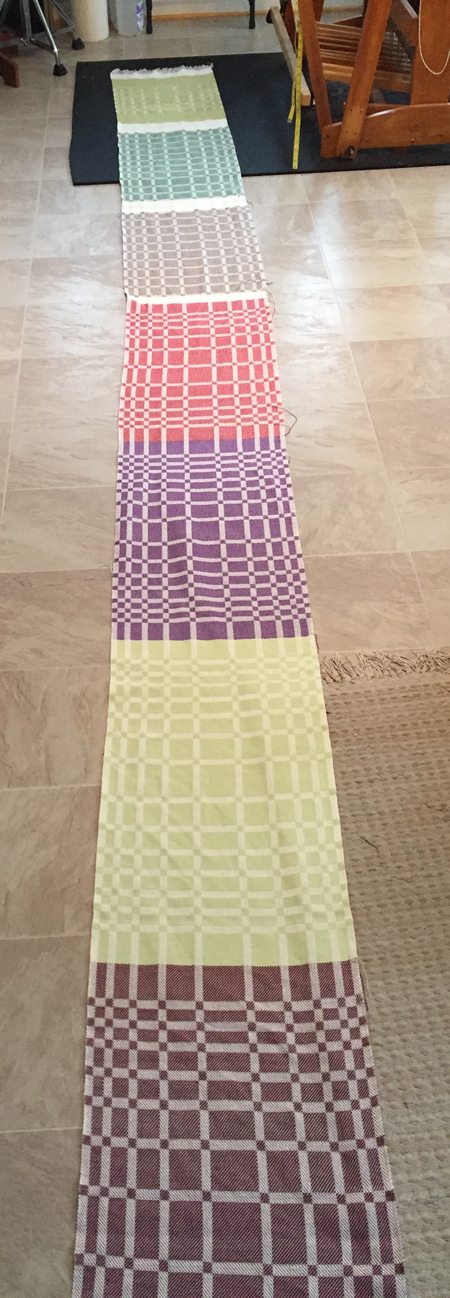
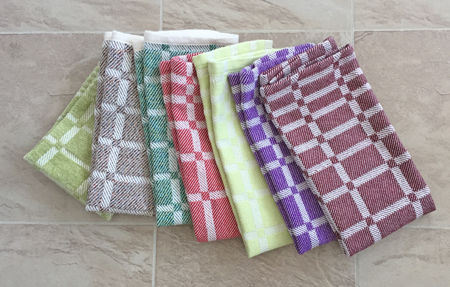
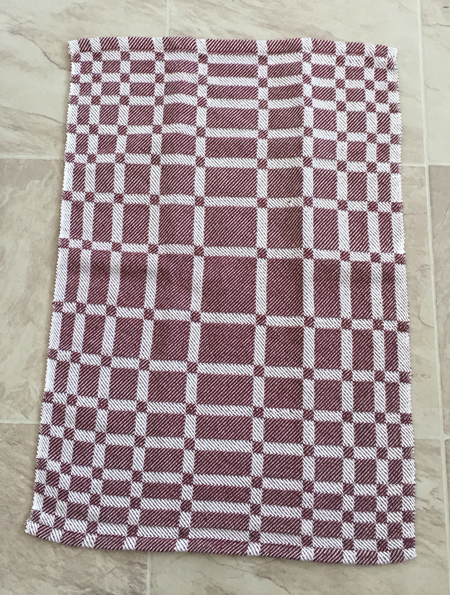
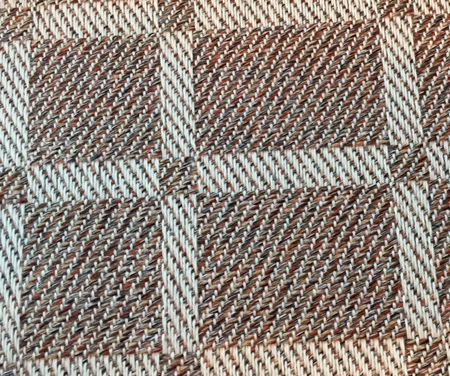
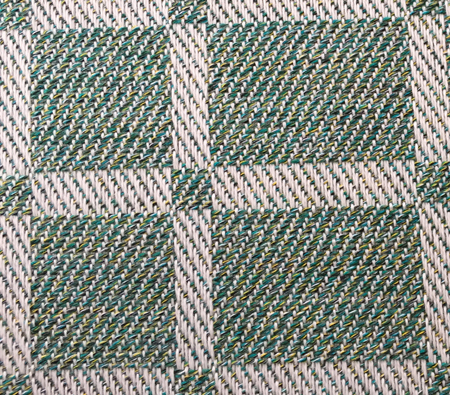
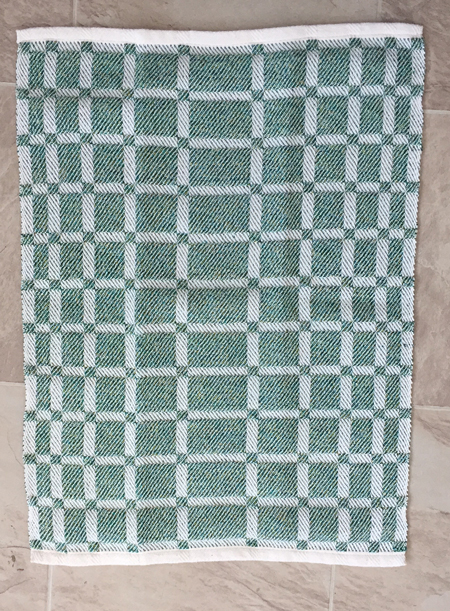
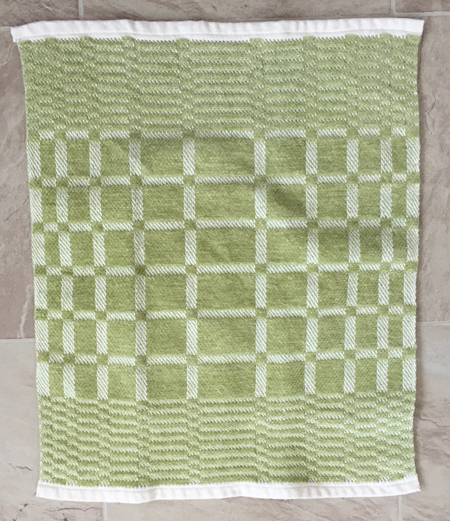
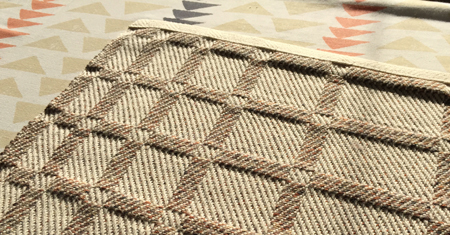
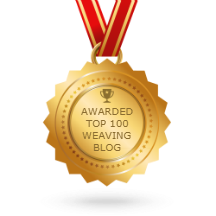
Wow and another Wow!!
Starting at the bottom, I’m very impressed with the way the fibers stand up and lie down in the last towel. That’s really attractive, and should probably add to absorbency, I’m thinking.
In your very first towels picture I’m struck by the beauty of the wood of your loom. It’s gorgeous!
The scarves in the first picture are beauties, and should do well at The Copper Shop, I think. (This is absolutely not to say that all your work shouldn’t do well, but the first picture ones especially!)
Have you thought about contacting Hurd’s come spring about towels? Might be another outlet for you.
I love the imagination you have put into your business and your weaving. By the way, this particular geometric pattern of the towels is VERY attractive, as the colors move back and forth from right slash / to left slash \, so to speak.
Thanks, Alma. I’m hoping that last towel soaks up water well, but also lets go of it. If it just holds that water and won’t dry, well, that’s not a good quality in a towel.
My Macomber loom – the one in the photo – is maple. Some parts are birds eye maple – lovely.
Tried Hurds before and it just isn’t a good fit. They’re not set up for that kind of thing.
The block twills combine interesting geometrics – very straight horizontals and verticals and clear diagonals. Fascinating to me how a simple threading and treadling can achieve this.